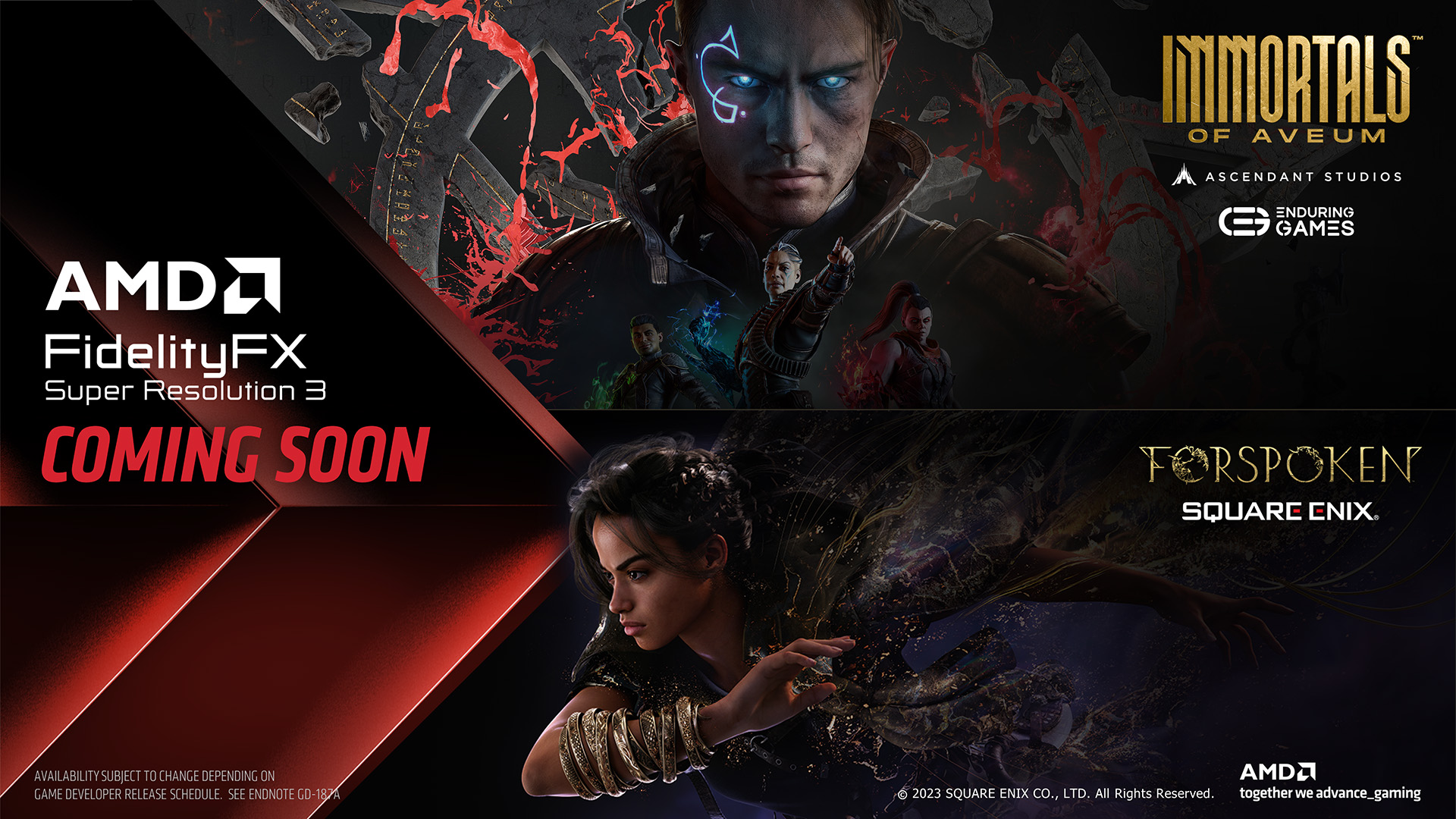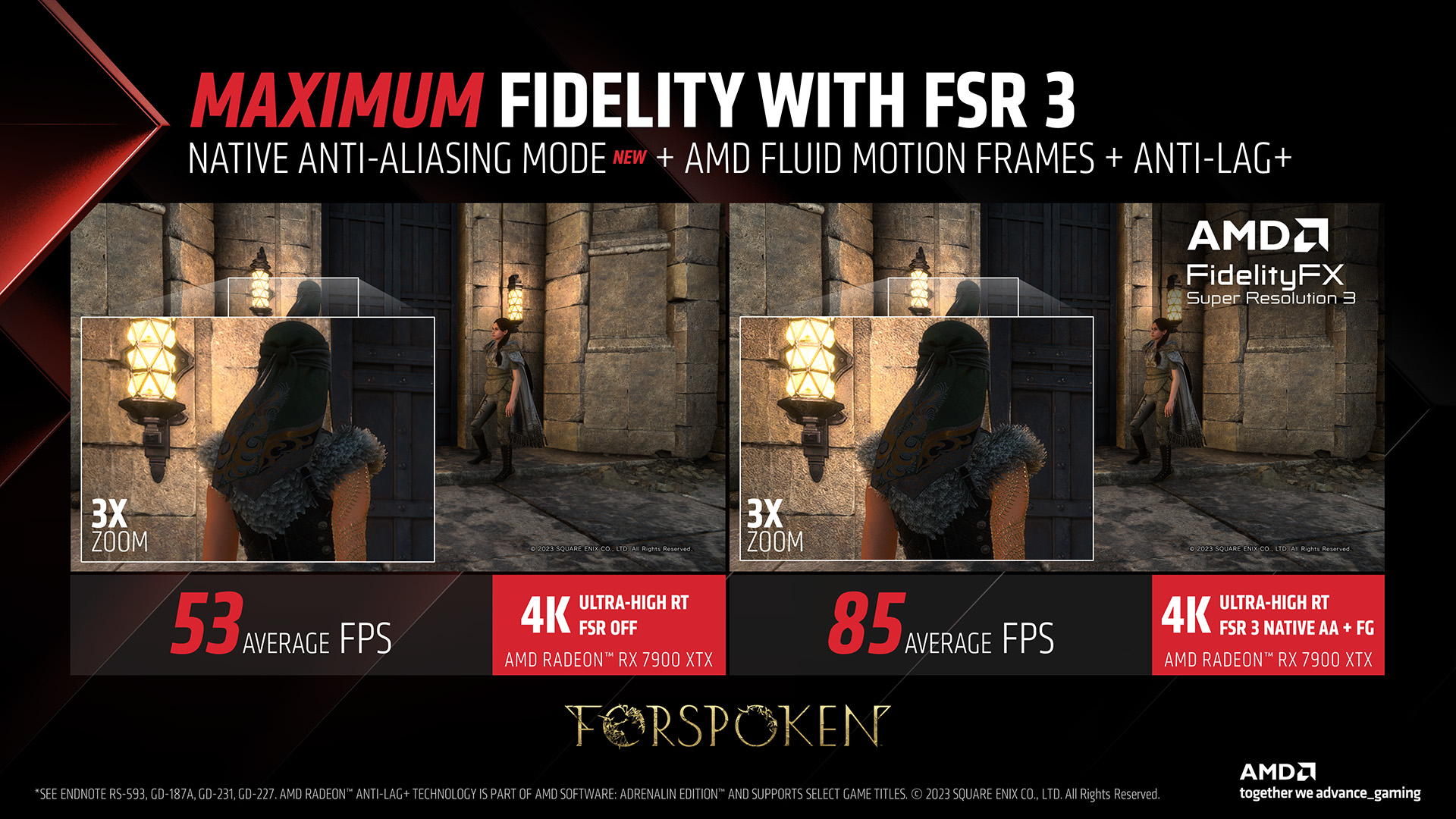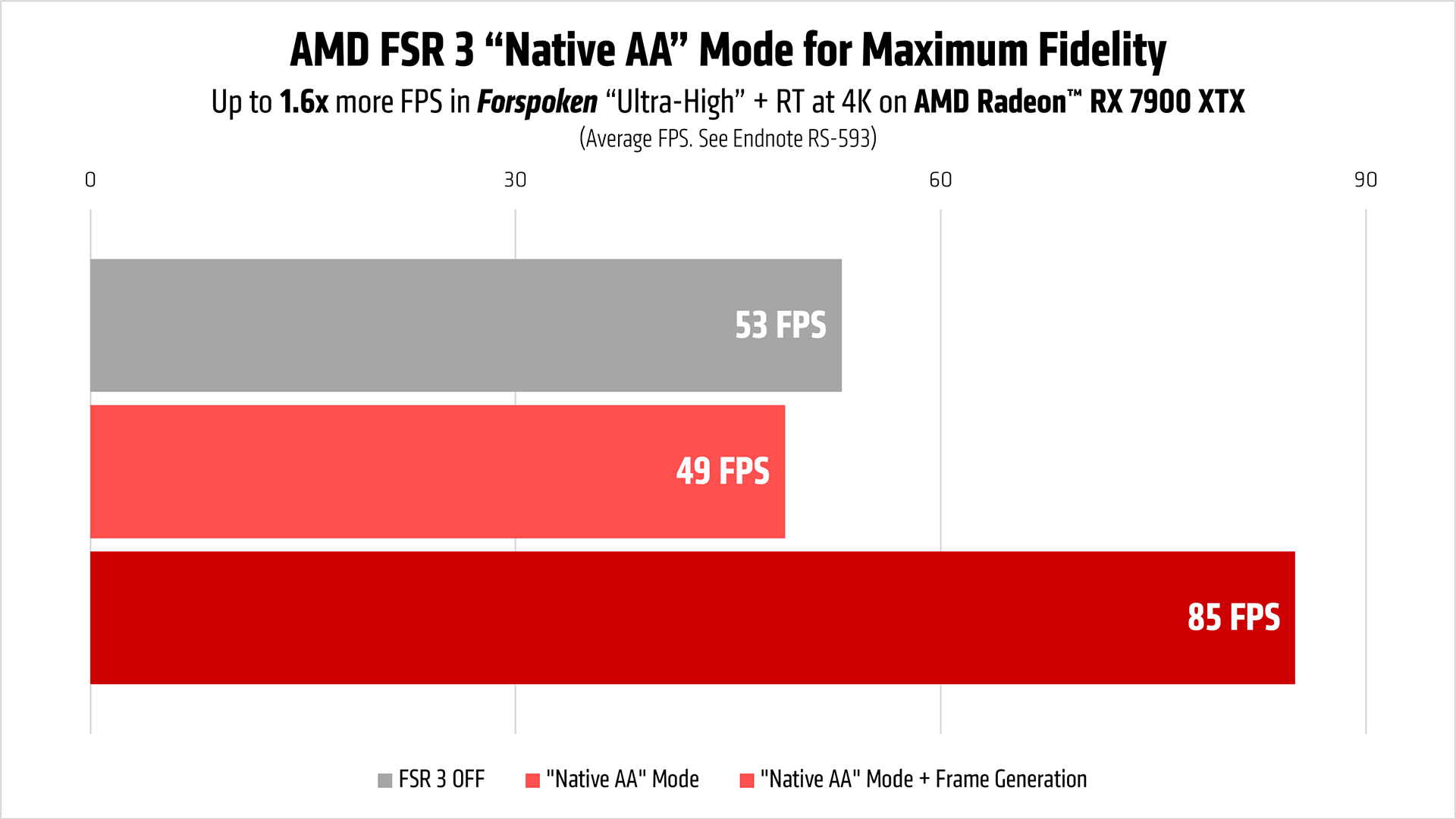AMD's FSR3 Frame Generation To Launch Today
First games with AMD's FSR3 show up today.

While AMD formally introduced its FidelityFX Super Resolution 3 technology almost a year ago, so far, no actual games have gained support for this version of the frame generation upscaling technology. But the wait seems to be over as the company said that the first two titles to support FSR3 would show up today! The new technology from the FidelityFX package promises to bring substantial improvements to AMD's Radeon RX 6000 and RX 7000-series boards, which are among the best graphics cards money can buy today.
"We are working with our partners to bring you the first two FSR3-enabled games tomorrow," Frank Azor, Chief Architect of Gaming Solutions and Marketing at AMD wrote in an X post last night. "More titles will begin ramping-up thereafter, as we saw with prior versions of FSR, which are now supported in over 300 announced games."
The first two games to support FSR3 are Forspoken by Ascendant Studios and Immortals of Aveum by Electronic Arts.
Frame Generation
The primary improvement of AMD's FSR 3 compared to FSR 2 is the introduction of frame generation capability. This feature leverages an advanced form of AMD's Fluid Motion Frames (AFMF) optical flow interpolation technology and temporal game data such as motion vectors to insert one extra frame between existing ones. AMD says that by generating that extra frame, it can double performance in supported games.
When paired with Super Resolution upscaling, AMD FSR 3's frame generation enables previously unachievable framerates in supported games. For example, AMD claims that using FSR3 with frame generation and performance super resolution upscaling can increase performance in Forspoken from 53 FPS to 175 FPS. This boost in performance can be especially advantageous in challenging scenarios, like playing games at 4K resolution with the highest ray tracing configurations or when the CPU performance restricts framerates.
It is crucial to mention that for the best and most responsive experience, AMD advises maintaining at least 60 FPS before applying the frame generation feature.
Latency Reduction
Image generation by definition increases latencies, so FSR 3 also includes its own latency reduction technology for smoother gameplay with frame generation enabled (it is still recommended to maintain 60+ FPS before applying frame generation). This latency reduction method promises to work on all graphics cards albeit in supported games.
Get Tom's Hardware's best news and in-depth reviews, straight to your inbox.
Gamers with AMD Radeon RX 7000-series graphics cards can also use the upcoming AMD Radeon Anti-Lag+ technology to decrease latency further in games like Forspoken, but those with Radeon RX 6000 or earlier GPUs can opt for Anti-Lag.
Native AA for Maximum Quality
Sophisticated antialiasing methods are very taxing on GPU performance and while techniques like FSR, DLSS, and XeSS are designed to wed quality and performance, their main focus is the latter. Meanwhile, there are games that already run great and can use some additional eye candy, which is AMD set to offer with its Native AA mode.
Native AA allows users to benefit from AMD FSR 3's sharpening enhancements without the upscaling. So, if a game's built-in anti-aliasing is not up to par, the 'Native AA' setting can enhance the visual quality.
While there are performance trade-offs with this mode, pairing it with AMD FSR 3's frame generation can lead to significant performance gains, as illustrated by AMD in the graph. In essence, the 'Native AA' setting combined with frame generation promises to deliver both enhanced quality and performance.

Anton Shilov is a contributing writer at Tom’s Hardware. Over the past couple of decades, he has covered everything from CPUs and GPUs to supercomputers and from modern process technologies and latest fab tools to high-tech industry trends.
-
DavidLejdar I suppose I will wait a bit longer then, with my first playthrough of Cyberpunk 2077... which is listed as getting FSR 3.Reply
Some months ago, the in-game benchmark said average FPS 56 without FSR and 77 with FSR 2.1 (at 1440p, without ray tracing), and 59 with FSR 2.1 and with medium ray tracing. Playable, but some more frames at ultra quality, sure sounds nice. -
salgado18 Reply
The only issue is that they recommend the game to already run at 60 fps for the best experience. So, in your case (also mine, I have the same gpu), using it on ultra at 30 fps would increase the image to 60 fps, but the input would still be at 30 fps. Remains to be tested if it's good or not, but I imagine it would be great for games with less action, like strategy and simulation.DavidLejdar said:I suppose I will wait a bit longer then, with my first playthrough of Cyberpunk 2077... which is listed as getting FSR 3.
Some months ago, the in-game benchmark said average FPS 56 without FSR and 77 with FSR 2.1 (at 1440p, without ray tracing), and 59 with FSR 2.1 and with medium ray tracing. Playable, but some more frames at ultra quality, sure sounds nice. -
vehekos Forspoken is a soulless trash, but fsr3 is nice, and working on non amd gpus makes it nicer.Reply



